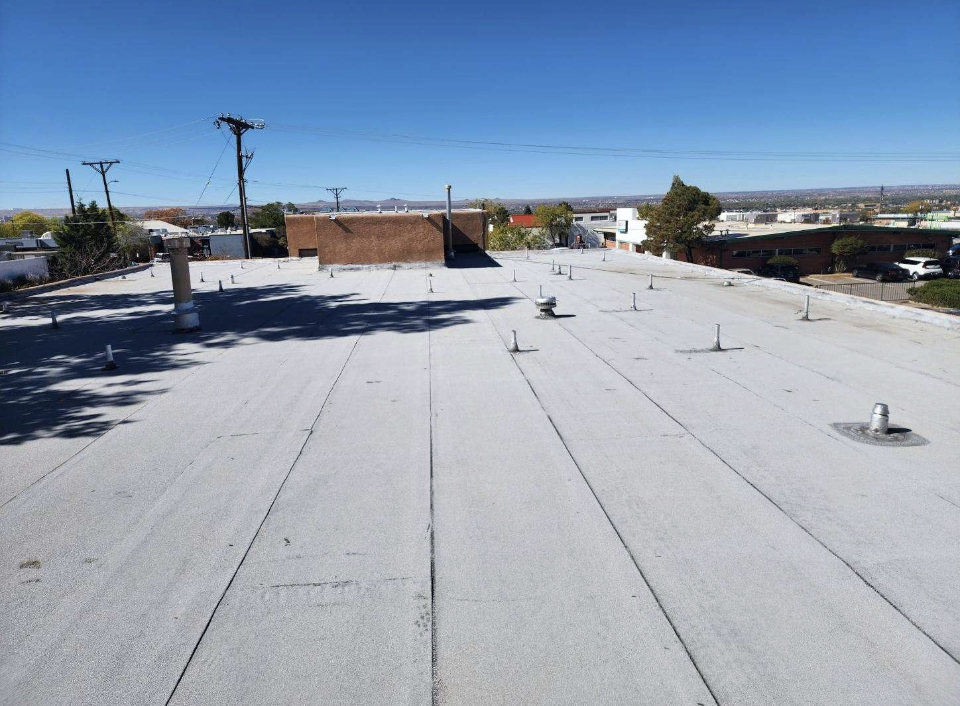Flat Roof

06
Overview
A flat roof is a type of roofing system that has a low pitch or no pitch, resulting in a nearly flat surface. This type of roof is commonly used on commercial, industrial and some residential buildings.
There are several types of flat roofing systems available, including:
– Built-up Roof (BUR)
– Modified Bitumen Roof
– Single-ply Membrane Roofs
– Spray Polyurethane Foam (SPF)
Advantages of a Flat Roof
Easy Access
Flat roofs provide easy access to the roof for maintenance and repairs.
Cost-Effective
Flat roofs are a cost-effective option compared to sloped roofs, as they require less material and labor to construct.
Space Utilization
Energy Efficiency:
Flat roofs can be designed to include insulation and reflective materials, which can help to reduce energy costs.
Flexibility
Versatility
Drainage
Tile roofs are designed to withstand high winds, heavy rain, and extreme temperatures, making them a great choice in areas that experience severe weather conditions.
